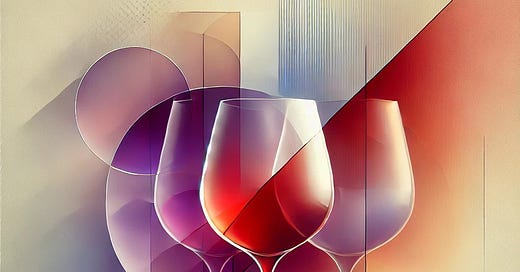The Spotlight
Welcome to “Under the Hood,” our exclusive Saturday series for Napa Valley Features paid subscribers. This week, we delve into the sweeping implications of the recent surgeon general’s Advisory, which unequivocally states: “Alcohol is a well-established, preventable cause of cancer.” This announcement marks a pivotal moment, raising critical questions about how the alcohol industry — and by extension wine culture — navigates a rapidly shifting public health narrative.
Additionally, we’re diving into the latest data from our readers’ polls and providing insights from our economic dashboard, covering local Napa Valley, U.S. and global markets.
In addition, we feature "What We Are Reading," a section with a handpicked list of recent articles that provide a variety of viewpoints on issues important to our community, and beyond.
“What We Are Reading” quote of the day: “All of us who made projections at the start of the year underestimated just how warm 2024 would be.” - Zeke Hausfather, a climate scientist at Berkeley Earth, a non-profit organization in California that tracks global temperatures.
Decanting the Data:
Alcohol Is a Well-Established, Preventable Cause of Cancer
by Tim Carl
NAPA VALLEY, Calif. — You can argue about the dose — whether it’s a drop, a glass or a bottle. You can point to studies showing health benefits of moderate drinking or call out shadowy groups trying to take away your right to drink. You can even remind us of Aunt Mary, who swore by her daily glass of wine and lived to 110. But none of that changes the headline: Alcohol is a well-established, preventable cause of cancer.
This isn’t hyperbole. It’s not a scare tactic. It’s the conclusion of U.S. Surgeon General Vivek H. Murthy’s advisory, which puts alcohol alongside smoking as a major preventable cause of cancer. You don’t have to agree with it. You don’t even have to believe it. But the fact remains: This is now the conversation, and it’s not going away.
For the alcohol industry — especially wine — this marks a seismic shift. The surgeon general’s warning has permanently altered how alcohol is understood and discussed. For an industry that has long promoted moderation as a hallmark of health and a symbol of the good life, the terrain has just become far more challenging.
Alcohol’s Cigarette Moment
According to the advisory, alcohol is now the third leading preventable cause of cancer in the United States, following tobacco and obesity. As a result, alcohol is increasingly being compared to cigarettes, with critics highlighting the parallels between “Big Alcohol” today and Big Tobacco of the 1960s. While some dismiss the comparison as exaggerated, the damage has already been done. The advisory has thrown the issue into sharp relief, framing alcohol not as a healthful indulgence but as a preventable killer.
“Alcohol is a well-established, preventable cause of cancer responsible for about 100,000 cases of cancer and 20,000 cancer deaths annually in the United States — greater than the 13,500 alcohol-associated traffic crash fatalities per year in the U.S. — yet the majority of Americans are unaware of this risk. This Advisory lays out steps we can all take to increase awareness of alcohol’s cancer risk and minimize harm,” Murthy said.
The advisory’s call for clearer warning labels and more effective public health campaigns signals a tipping point, one that threatens to fundamentally alter how alcohol is perceived, marketed and consumed. For the alcohol and wine industries, the comparison to cigarettes is not just inconvenient — it’s catastrophic. The once-romanticized narrative of wine as a symbol of sophistication and health is colliding with messages of its risks, leaving the industry scrambling to address a growing crisis of public perception.
When the landmark 1964 surgeon general’s report linked cigarettes to cancer, Big Tobacco doubled down, attempting to reframe smoking as a symbol of freedom, rebellion, health and sophistication to counter health concerns. These strategies ultimately backfired, eroding public trust and leading to sweeping regulations that reshaped the industry forever.
Now the question for those in the alcohol industry is whether they will follow the same path — or learn from history.






